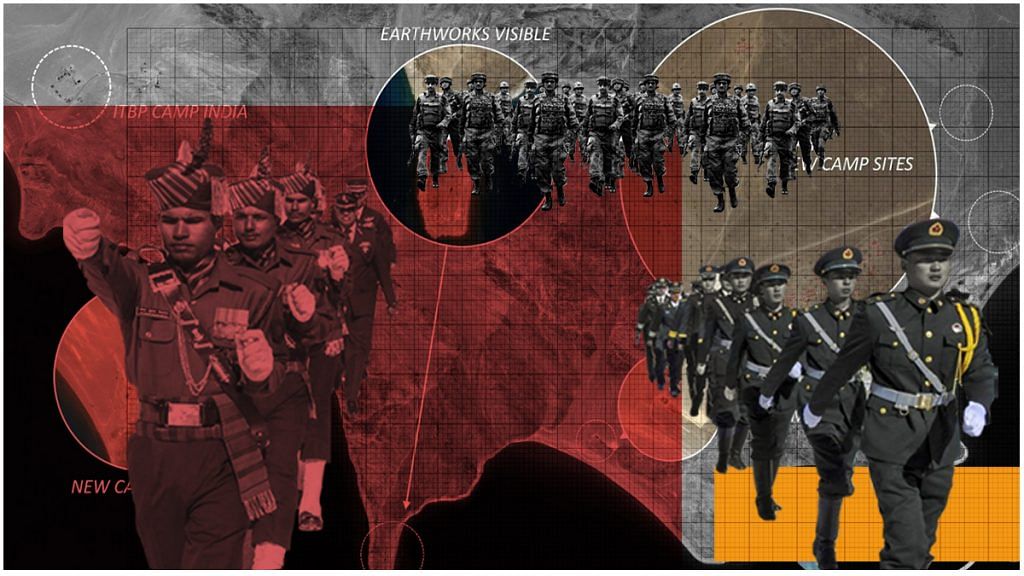New Delhi: The Corps Commanders of India and China held a marathon 12-hour-long meeting Tuesday in a bid to amicably reduce tensions at the Line of Actual Control (LAC), even as the People’s Liberation Army’s mouthpiece launched a scathing attack on New Delhi’s move to ban 59 Chinese apps.
Sources in the defence and security establishment told ThePrint that the meeting between the 14 Corps Commander Lt Gen. Harinder Singh and his Chinese counterpart Major General Lin Liu, Commander of the South Xinjiang Military District, involved detailed discussions on friction points, especially the Pangong Lake.
The meeting, which took place on the Indian side of the Chushul-Moldo Meeting Point, began at about 11 am Tuesday and ended 12 hours later, well into the night.
The sources said that since it was the Indians hosting the Chinese delegation, India was the first to talk about the issues concerned.
The Indian side focussed on the Line of Actual Control (LAC) violations by the PLA and sought restoration of status quo as of early April. India stressed that Chinese attempts to change the status quo will not be allowed even as it sought de-escalation.
As reported by ThePrint earlier, India and China had on 22 June discussed the possibility of not deploying additional troops and equipment in the area of the ongoing stand-off at Eastern Ladakh besides stopping new tents and bunker construction activity in friction areas.
Also read: France extends ‘steadfast & friendly’ military support to India amid LAC tensions with China
‘First aim to prevent escalation of tension’
Explaining the talks process, sources said that the first aim is to ensure there is no escalation of tensions.
“The second important element is de-escalation, which involves drawing back troops from forward positions in a phased manner,” a source said. “The third would involve disengagement that will pave the way for the status quo ante, which is early April status quo.”
Both India and China have stationed large numbers of troops along the LAC with India pumping in more than three Division strength of troops, which includes elements from the artillery, armoured brigades and the rest.
The Indian Air Force has also been put on operational alert and all bases near Ladakh have been activated with some fighters being brought in from other bases.
The Air Force is playing a critical role in logistics enhancement and troop movement.
The Navy has also increased its surveillance in the Indian Ocean region.
Meanwhile, the official mouthpiece of the PLA has come out with an editorial, post midnight, criticising India’s move to ban 59 Chinese apps.
China Military Online, authorised by the Central Military Commission of the People’s Republic of China (PRC) and sponsored by the PLA News Media Center, accused India of escalating tensions by banning the Chinese apps.
Also read: China ‘deploys’ S-400s, IAF has war gamed the scenario multiple times for air ops
